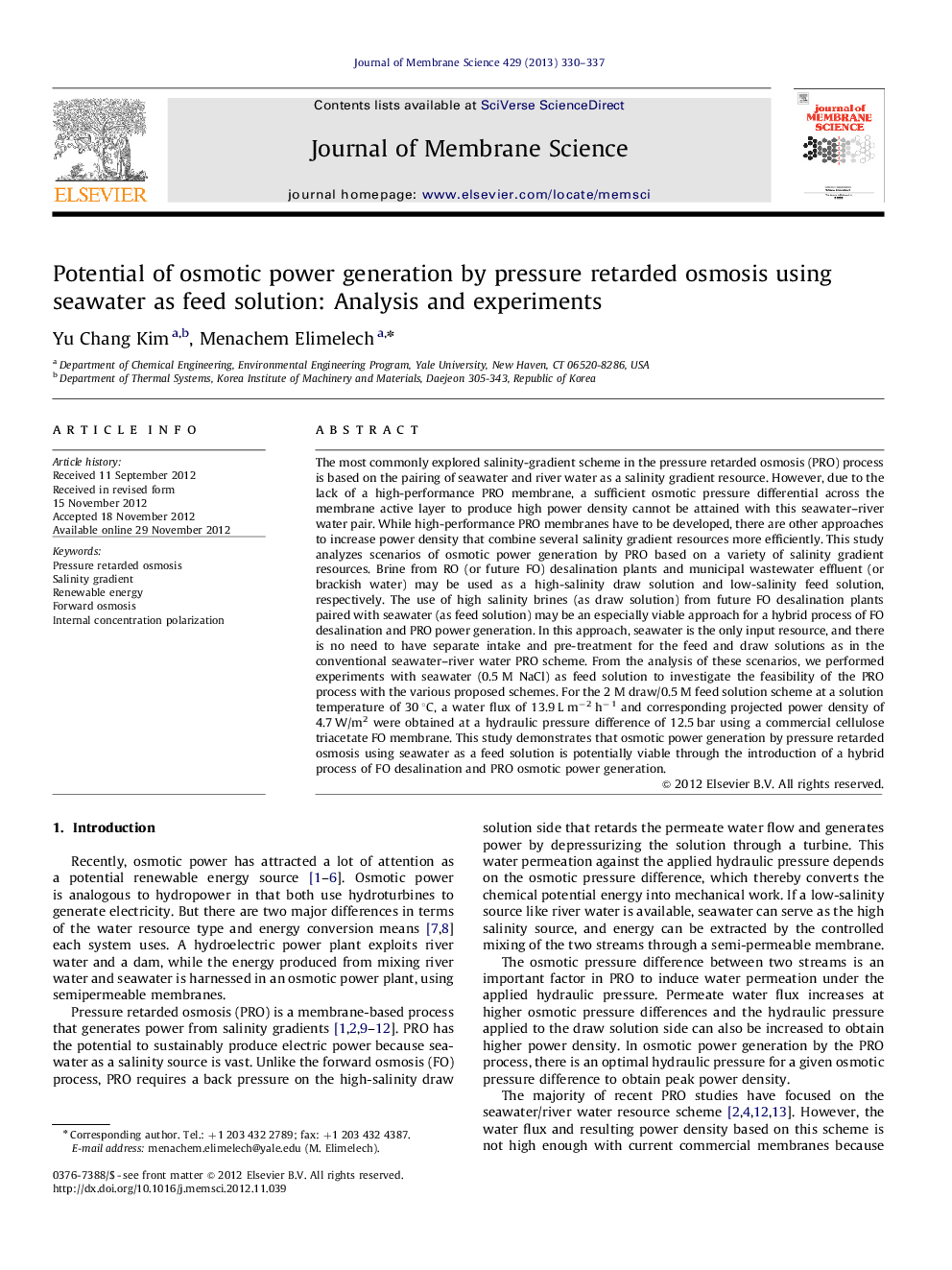| کد مقاله | کد نشریه | سال انتشار | مقاله انگلیسی | نسخه تمام متن |
|---|---|---|---|---|
| 634572 | 1456070 | 2013 | 8 صفحه PDF | دانلود رایگان |

The most commonly explored salinity-gradient scheme in the pressure retarded osmosis (PRO) process is based on the pairing of seawater and river water as a salinity gradient resource. However, due to the lack of a high-performance PRO membrane, a sufficient osmotic pressure differential across the membrane active layer to produce high power density cannot be attained with this seawater–river water pair. While high-performance PRO membranes have to be developed, there are other approaches to increase power density that combine several salinity gradient resources more efficiently. This study analyzes scenarios of osmotic power generation by PRO based on a variety of salinity gradient resources. Brine from RO (or future FO) desalination plants and municipal wastewater effluent (or brackish water) may be used as a high-salinity draw solution and low-salinity feed solution, respectively. The use of high salinity brines (as draw solution) from future FO desalination plants paired with seawater (as feed solution) may be an especially viable approach for a hybrid process of FO desalination and PRO power generation. In this approach, seawater is the only input resource, and there is no need to have separate intake and pre-treatment for the feed and draw solutions as in the conventional seawater–river water PRO scheme. From the analysis of these scenarios, we performed experiments with seawater (0.5 M NaCl) as feed solution to investigate the feasibility of the PRO process with the various proposed schemes. For the 2 M draw/0.5 M feed solution scheme at a solution temperature of 30 °C, a water flux of 13.9 L m−2 h−1 and corresponding projected power density of 4.7 W/m2 were obtained at a hydraulic pressure difference of 12.5 bar using a commercial cellulose triacetate FO membrane. This study demonstrates that osmotic power generation by pressure retarded osmosis using seawater as a feed solution is potentially viable through the introduction of a hybrid process of FO desalination and PRO osmotic power generation.
Figure optionsDownload high-quality image (570 K)Download as PowerPoint slideHighlights
► Innovative salinity-gradient schemes are analyzed for power generation by PRO.
► Feasibility of using seawater as feed solution for PRO is examined.
► High power densities are feasible by pairing seawater feed with desalination plant brines.
► Internal concentration polarization is a major hindrance for high power densities with seawater feed.
Journal: Journal of Membrane Science - Volume 429, 15 February 2013, Pages 330–337